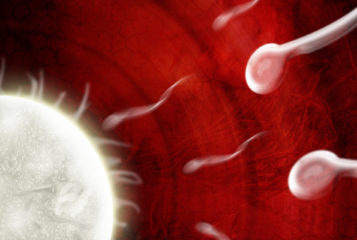A gene which helps sperm bind to an egg has been identified by scientists.
Sperm-to-egg binding is an essential process during fertilisation and although the preliminary studies were performed on mice, the gene may represent a new target for infertility treatments.
Sperm from mice that had the gene switched off were only able to fertilise eggs from female mice three percent of the time compared to 80 percent fertilisation success in normal mice.
The gene codes for a protein called PDILT which helps another gene product to form and assemble correctly and then to reach the surface of a sperm. Once this happens the sperm is able to navigate the uterus and oviduct and penetrate the sticky outer layers of an egg.
The study, which is published in PNAS (Proceedings of the National Academy of Sciences), also demonstrates the importance of cumulus cells, a cluster of cells that surround and protect the egg, as their presence allows sperm to bind to their target. Sperm from mice that had their PDILT gene switched off would not bind to a bare egg, but would bind to an egg surrounded by cumulus cells.
Co-author Dr Adam Benham from Durham University in the UK said that the PDILT protein is 'an essential part of the navigation system of sperm. Like any navigation system, you have to programme where it is that you want to go and this protein plays an essential role in getting sperm to the right destination, in good shape, and in good time'.
A question now for the scientists is whether the PDILT gene has as much importance in human fertility as it does in mice. 'Mutations in the gene may be responsible for unexplained male fertility problems and further research may aid more effective IVF treatment', said Dr Benham.
Sources and References
-
Gene discovery gives couples helping hand to conceive
-
Scientists discover new gene 'key to fertility'
-
Gene involved in sperm-to-egg binding is key to fertility in mammals
-
Protein disulfide isomerase homolog PDILT is required for quality control of sperm membrane protein ADAM3 and male fertility





Leave a Reply
You must be logged in to post a comment.